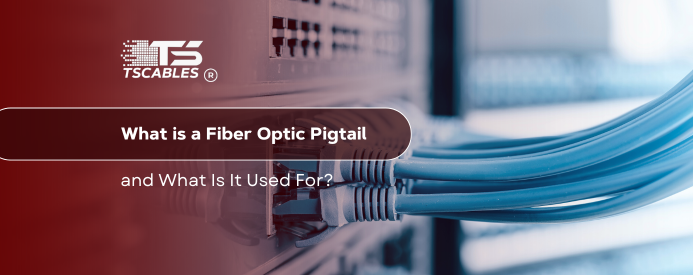A fiber optic pigtail is a small piece of cable with a big job. You’ll find it at the center of many internet and communication networks. One end comes with a ready-to-use connector, while the other is a bare fiber ready to be fused. It's used to connect equipment like switches, routers, and outlets.
As a result, it makes networking simple, smart, and very efficient. If you’ve heard terms like pigtail plug connector, pigtail tool, or pigtailing wires, this is what they’re talking about. It is all about making clean, strong fiber connections easy. Continue reading the article to learn more about what a fiber optic pigtail is and what it is used.
Fiber Pigtail Specifications
Fiber optic pigtails come in different styles and materials, but all share a common goal and that is reliable, fast fiber connections. They are short fiber strands, typically no more than a couple of meters. On one end is a factory-installed connector. The other end is a stripped, bare fiber.
These cables usually fall into single-mode or multimode types. Single-mode is used for longer distances. Multimode works well over short runs.
Fiber optic pigtails are part of broader fiber optic management. They help organize and connect cables in patch panels, distribution boxes, and outlets without confusion. Here are some use cases for fiber optic pigtails:
- Connecting patch panels: Pre-terminated connectors simplify the connection process.
- Joining fiber to switches or routers: Quick, clean installs in telecom or data rooms.
- Splicing into backbone cables: Great for breakouts in high-density networks.
- Testing and troubleshooting: Works with a pigtail tool to run diagnostics.
- FTTH (Fiber to the Home) installs: Makes outlet pigtail wiring a breeze.
Fiber Pigtail and a Fiber Patch Cord: Key Differences to Know
Don’t mix up a fiber optic pigtail with a patch cord. It’s easy to mix up a fiber optic pigtail and a fiber patch cord, especially if you're just starting out with fiber installations. Both look similar and serve connection roles in a network, but they aren't interchangeable.
Knowing the difference can help you avoid connection failures, signal loss, and wasted time on rework. Here's how they differ:
- Pigtail: One end has a connector, the other end is bare.
- Patch cord: Both ends come with connectors.
- Use: Pigtails are used for fusion splicing. Patch cords go between devices.
- Length: Pigtails are short. Patch cords vary in length.
- Installation: Pigtails are more permanent; patch cords are for quick changes.
Knowing the right use saves time and money and helps prevent network issues. This difference affects how the entire system functions. Using a patch cord when a fiber optic pigtail is needed can result in loose connections or, worse, failed network links.
In contrast, using a pigtail in place of a patch cord can make future changes harder, since it’s a more permanent solution. The bottom line is that you know your cable to know your connection.
Types of Fiber Pigtail Connectors
The type of connector on the pigtail decides where and how you use it. Here's a look at the most common types:
LC Pigtail Connectors
These are small and save space in tight spots. Used a lot in data centers. If your setup needs lots of connections in one panel, LC is a great pick.
SC Pigtail Connectors
These are square and easy to push in or pull out. You’ll see them in cable TV and data systems. Reliable and user-friendly.
ST Pigtail Connectors
Round and twist-on. These are old school but still used in schools, labs, and legacy systems. They lock in place with a bayonet-style twist.
FC Pigtail Connectors
Good for places that shake or move, like industrial setups. They screw on tight and don’t pop out under stress.
MTP/MPO Pigtail Connectors
These aren’t for beginners. They hold lots of fibers, mostly 12 or more in one line. Think cloud servers or big telecom sites. They need special pigtail connector kits to work with.
How to Choose the Right Fiber Pigtail?
Picking the right pigtail isn’t rocket science. But there are a few things to check off. It will ensure that you find the right one according to your needs. Here are the important things to consider when choosing a fiber pigtail to help you find the right one:
- Fiber Type: Match single-mode to single-mode and multimode to multimode.
- Connector Type: Make sure it fits your device or panel.
- Cable Jacket: Some jackets are better for heat, others for tight spaces.
- Fiber Count: Need one strand? Get a single. Need many? Choose pigtails cable
- Location: For dusty or messy spots, sealed or armored pigtails are best.
Also, think about getting the right pigtail plug and how it connects to power or devices. You might need a pigtail cord or pigtail plug connector to get things working.
Conclusion
A fiber optic pigtail might look small, but it plays a key role in keeping data flowing smoothly. If you want speed, clarity, and stable signals, you’ll want to get pigtails right. TS Cables offers top-quality fiber gear to help you get there.
FAQs
1. What is pigtail wiring used for in fiber optics?
Pigtail wiring joins fiber strands to connectors or gear, often by fusion splicing in patch panels or wall outlets.
2. What is a pigtail connector?
A pigtail connector is the pre-attached end of a fiber pigtail that plugs into a switch, panel, or device.
3. How do I know if I need a pigtail cord or full cable?
Use a pigtail cord for splicing or short jumps. Use full cables for long-distance device-to-device runs.
4. Are pigtails in electrical systems the same as fiber?
Nope. Pigtails in electrical wiring involve copper. Fiber pigtails handle light signals, not current.
5. Do I need a pigtail tool for installation?
Yes. A splicing tool or fusion splicer helps you attach the pigtail plug connector properly and safely.






